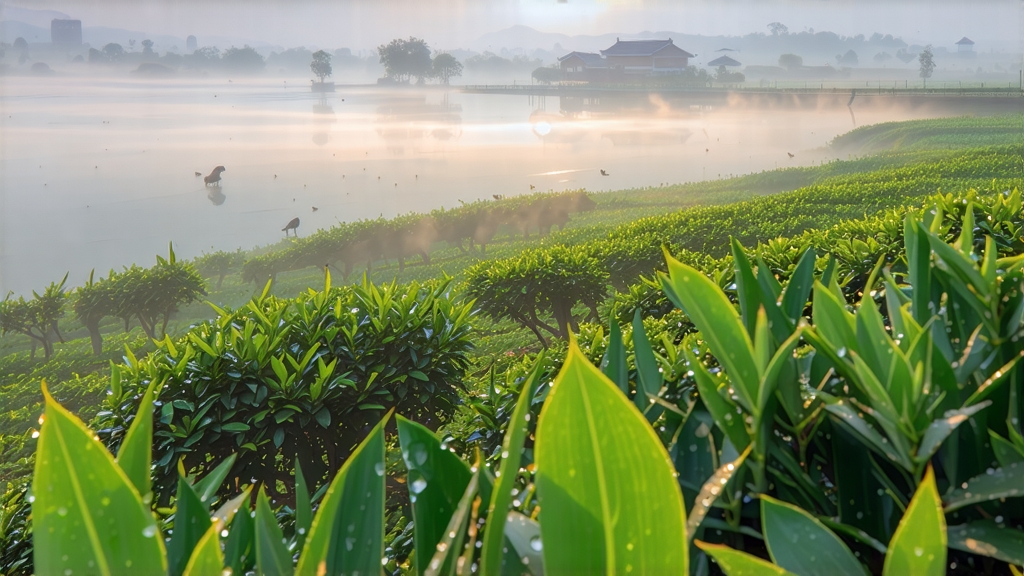
Biluochun, whose name translates literally to “Green Snail Spring,” is one of China’s ten most celebrated teas, yet it remains a quiet treasure beyond the country’s borders. Grown in a microclimate where the Taihu Lake’s mist meets sweet-scented fruit trees, this delicate green tea has captivated emperors, poets, and modern connoisseurs for over a thousand years. Its tiny, spiral-shaped leaves look like jade snails plucked at daybreak, and the liquor they release is the palest gold, shimmering with orchid brightness and the whisper of apricot. To understand Biluochun is to step into a landscape of legend, craftsmanship, and seasonal urgency that defines the soul of Chinese green tea.
Historical records first mention the tea during the Tang dynasty (618-907), but its fame crystallized in the Kangxi era (1661-1722) when the emperor—touring Lake Tai—was served an infusion so fragrant he asked its name. Told it was “Xia Sha Ren Xiang,” literally “scary fragrance,” he found the moniker inelegant and rechristened it Biluochun for its snail-like curl and spring harvest. From that moment the tea became tribute grade, carried by fast horses to Beijing’s Forbidden City along the same canals that once floated rice and silk. Local lore adds another layer: tea pickers worked so closely among peach, plum, and loquat trees that petals and pollen settled on the fresh leaf, lending a natural fruity note impossible to replicate elsewhere.
Today the authentic appellation is limited to the Dongting Mountains—Dongshan and Xishan—two hilly islands rising from Taihu in Jiangsu Province. The lake acts as a vast heat reservoir, moderating winter cold and bathing the slopes in evaporative mist. Camellia sinensis var. sinensis bushes here are interplanted with fruit trees, creating a living aromatherapy chamber. When the first spring buds appear—usually between the Qingming and Grain Rain solar terms—experienced farmers judge the exact morning when “one bud unfolds just enough to show its first leaf,” the standard for top-grade Biluochun. Picking must finish before noon so that the tender shoots retain overnight moisture and lake-cooled sweetness.
The craft that follows is a ballet of heat, pressure, and timing performed entirely by hand. Fresh leaf is first “sha qing” or kill-green, a rapid pan-firing at 180 °C that deactivates oxidative enzymes within ninety seconds. Masters swirl the leaf with bare fingers, judging doneness by the sound: a sharp pop signals evaporation of surface water, while a softer crackle means internal moisture is retreating. Immediately the leaf is rolled into its signature spiral; palms press downward in a counter-clockwise motion against a bamboo tray heated to 60 °C. Each tiny coil must be tight enough to lock in fragrance yet loose enough to dry evenly. Final drying drops the temperature to 50 °C for forty minutes, reducing moisture to 5 % while caramelizing trace sugars that heighten the tea’s sweet, nutty finish. A finished kilogram requires roughly seventy thousand buds, all picked and processed within the same day.
Because the leaf is so petite and fragile, brewing Biluochun demands restraint. The classic Jiangsu method uses a tall, thin glass—never porcelain—so that the spirals can be observed unfurling vertically, a performance nicknamed “the forest of dancing snails.” Water should be 75 °C, achieved by pouring boiled water into a fairness pitcher and waiting two minutes, then decanting three grams of tea per 150 ml. The first infusion lasts only twenty seconds; subsequent steeps add five seconds each. When done correctly, the liquor smells like white peach skin and tastes like spring water infused with baby spinach, magnolia, and a trace of toasted sesame. The after-linger, or “hui gan,” arrives as a cool menthol sensation at the back of the throat, a hallmark of amino-acid richness unique to lake-cultivated leaf.
Professional cupping follows a quieter choreography. Warmed aroma cups are capped for thirty seconds, then inverted to release the “dry fragrance.” Top-grade Biluochun will scent the entire room with notes of lychee, loquat blossom, and fresh cream. Next, the “wet leaf” aroma is assessed after the first steep; broken cell walls exhale cooked snow pea and sweet corn. On the palate, judges look for three concurrent qualities: xian (umami sweetness), huo (lively briskness), and run (moist, lubricating texture). A fourth,